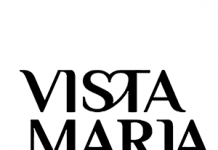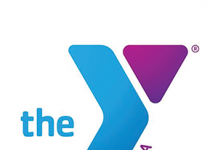
Ь§
In February 2006, the Detroit Zoo was teetering on the brink of extinction. As the city wrestled with deep budget cuts, the Detroit City Council faced a decision to relinquish control of the zoo or close the beloved institution indefinitely.
For two weeks, citizens were outraged as an agreement failed to emerge, but on March 1, 2006, the Detroit Zoological Society assumed governance, operations, and management of both the Detroit Zoo and the Belle Isle Nature Zoo.
Zoogoers everywhere rejoiced.
A mere decade later, the faltering Detroit Zoo of 2006 seems like a distant relative of todayтs thriving enterprise. With record-setting attendance numbers, multiple sustainability awards, and one shiny, new Polk Penguin Conservation Center, the Detroit Zoo stands as a model organization not only for other local nonprofits, but also for zoos and aquariums throughout the country.
But in order to nourish that success, the zoo has had to prove to donors and patrons that it can walk the walk and talk the talk of its bold, ambitious, and multifaceted mission.
тMission is really important,т Detroit Zoo CEO and executive director Ron Kagan says. тBut the reality is that if you donтt show that youтre executing the mission, then itтs just words.т
Within the past year alone, the Detroit Zoo has made numerous changes to align itself closer with several of its mission-driven goals, particularly in the arena of environmental sustainability.
Last September, the organization completed a three-year-long operation to phase out bottled water from its concession stands. In December, the zooтs Royal Oak campus switched to 100 percent renewable electricity harnessed from wind farms. And this fall, construction is set to be completed on the zooтs (and Michiganтs) first dry biodigester, which will power the zooтs animal hospital by converting 400 tons of animal manure into compost and methane gas.
Collectively, the moves helped earn DZS the title of Crainтs Detroit Business Best-Managed Nonprofit of 2015. DZSт eco-conscious efforts were also recognized in 2015 by the Association of Zoos & Aquariums, which awarded the Detroit Zoo a coveted тGreen Awardт for its leadership in the industry as a sustainable institution.
Kagan acknowledges that the awards are appreciated, but, he says, indicators that the zoo is truly achieving its mission-stated goals also come from other sources.
тWeтre focused on a mission that makes a lot of sense,т Kagan says. тFortunately, the community feels that those things are indeed important, and so theyтve been very, very supportive. Itтs resonating, and we know that from our attendance numbers. We know it from membership, we know it from philanthropy, and we know it from the voting booth.т
In 2015, the zoo set a new attendance record with 1,476,378 visitors т over 100,000 more than the previous record set in 1997. As of August of this year, the zoo was on track to surpass that record again.
This August, voters in Oakland, Wayne, and Macomb counties also expressed their appreciation for the zoo when they approved a millage renewal by an overwhelming 69-31 percent margin. The millage, which was first introduced in 2008, provides about one-third of the zooтs operating budget.
Aside from satisfied voters, however, the zoo also seeks to satisfy another important demographic: its donors. In the eyes of DZS, retaining their existing support and inspiring new members to donate often comes down, again, to carrying out the zooтs mission.
тPeople are excited about the mission because people care about nature,т Kagan says. тSo itтs not very hard, really, to sell the mission. The issue then is the belief that weтre actually making a difference. That weтre doing what we say we will do and that it is having impact.т
Showcasing the zooтs impact is key to securing donations, but showing donors how their contributions translate directly to results is crucial, too, particularly in their individual areas of interest.
Alan Kalter and his wife, Dr. Chris Lezotte, have supported the Detroit Zoo for decades. A zoo member and board member since 1997, Kalter has long advocated for the zooтs advancement in animal welfare, and when an opportunity arose in 2012 to establish the zooтs Fund for Wildlife Rescue, Kalter and Lezotte provided the lead gift.
тWe looked for a way to contribute to the mission but to do it in a meaningful way that could really make a difference for the animals,т Kalter says.
Since 2012, the Kalter/Lezotte Fund for Wildlife Rescue has helped rescue and provide sanctuary for dozens of animals from lizards to seals to lions. Helping to find homes for those animals results in a тwonderful feeling,т Kalter says, and working with zoo leadership to bring their ideas to fruition has also been a satisfying process.
тMy experience with the zoo is, whether itтs the leadership or staff or the board, there is a central focus that is mission-driven and apolitical,т Kalter says. тEverybody comes to the table with a simple thought and that is, тWhat can we do to achieve the mission?т т
Seeing the zoo execute aspects of its mission successfully can be a big draw to keep support coming, especially on larger projects like the Fund for Wildlife Rescue or, more recently, the Polk Penguin Conservation Center.
тOftentimes, a capital product gives (donors) a chance to really see where their money goes,т says Jane Alessandrini, chief development officer at DZS. тThey also understand that when a zoo does a capital project, it often catapults the zoo further in membership, visitation, revenue that we earn, and thereтs impact on our conservation mission. So they really see that a project like that can be a game changer for the zoo.т
Of course, smaller contributions can make for a big impact, too.
Barbara Kriigel and her husband Kip enrolled as zoo members a number of years ago and began donating through the zooтs Renaissance Circle donation program about 10 years ago. As an animal lover and librarian, Kriigel says the zooтs education initiatives have always been important to her, and sheтs consistently been pleased in supporting them.
тI love how (animals and education) come together at the zoo,т Kriigel says. тAnd by helping with different efforts when theyтre trying to raise money, in a little way, I help provide things that other people can enjoy and learn from.т
As a docent who also volunteers regularly at the butterfly house, Kriigel says sheтs seen for herself how the zooтs education efforts, and her contributions to them, can make the difference she hopes to make.
тI canтt tell you how many people come into the butterfly garden, older people, and theyтll say, тI used to see so many butterflies and lightning bugs, and why donтt I see that anymore?т And thatтs an opportunity to talk about how pesticides that weтre using impact where butterflies lay their eggs. So, in little, small ways, we all can make a difference, and I feel like I do that by being a volunteer and a Renaissance member.т
Corinne Shoop is another zoo volunteer who felt motivated to become a donor after learning about the zooтs animal rescue efforts. Having rescued greyhounds herself, she wanted to support an organization with ideals similar to her own.
тItтs an institution that I truly believe in, so I decided to participate in that manner as well,т Shoop says. тItтs like living art. It changes all the time.т
As the zoo looks to the future, not all of its upcoming projects are the kind that patrons clamber to support. Thereтs the need for a new parking structure to accommodate the zooтs growth in attendance, and throughout the zoo, DZS will be installing permeable pavement to improve its sustainability efforts. Those changes arenтt glamorous, Kagan says, but theyтre important nonetheless.
тTo a large extent, weтre not on the treadmill of, тWhatтs the next exhibit?т т Kagan says. тWe know that every little piece that we do, whether itтs in sustainability or education or welfare or conservation, every little piece is important, and collectively it makes a difference.т
Fortunately for Kagan and the zoo, its donors feel the same way.
Ь§
|
| Ь§ |
|









